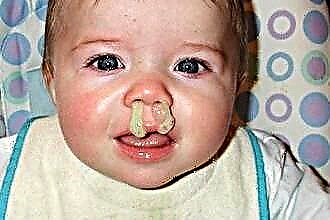For people who have a fungus in the ears, treatment, drugs and additional measures are prescribed individually in each case. Mycoses of the outer and middle ear are quite common, almost 50% of the world's population have diseases of this kind. But few people are treated. Timely seeking help from an otolaryngologist will help you avoid serious complications and recurrences of otomycosis.
Difficulty of choice
 Antifungal drugs for the ears cannot be prescribed for oneself, because each separate type of this infection should be treated according to the scheme individually selected by the doctor. During the examination and laboratory research, specialists find out which type of fungi needs to be eliminated, and check its reaction to various antimycotic agents.
Antifungal drugs for the ears cannot be prescribed for oneself, because each separate type of this infection should be treated according to the scheme individually selected by the doctor. During the examination and laboratory research, specialists find out which type of fungi needs to be eliminated, and check its reaction to various antimycotic agents.
The complexity of therapy lies in the fact that most modern drugs, especially those that immediately have anti-inflammatory, antibacterial, and antimycotic effects, quickly become addictive.
In order for the use of drugs to give positive results, the patient during treatment must constantly come for examination to the otolaryngologist. There are times when drugs need to be replaced.
For treatment, the following therapy is used:
- local (for simple cases not started);
- systemic (in the absence of results from local treatment and in advanced cases);
- complex (in the presence of serious underlying causes, for example, diabetes mellitus, immunodeficiency, untreated otitis media, etc.)
Remedies for otomycosis
| Fungus pathogen | Drug name | Method of application |
| Yeast-like | Econazole, "Pimafucin", "Fluconazole" "Clotrimazole" Natamycin. | All drugs are available as drops or solutions. They are buried directly into the ear or applied to a cotton flagellum, which is inserted into the sore ear for 5-10 minutes. The procedure is repeated 3-5 times a day, depending on the chosen remedy and the doctor's recommendations. |
| Moldy | "Nitrofunkin", | They are applied to a cotton tourniquet that is placed in the ear, or dripped into the ear canal. |
| Particularly pathogenic | "Flucostat", "Pimafucin". Together with them, agents are prescribed to maintain the normal state of the intestinal microflora, such as Linex, Bifiform, Yogurt, Acipol, etc. | According to the doctor's instructions or prescription, in some cases, treatment regimens may differ depending on the complexity, stage and location of the disease. |
Additional treatments
 If otomycosis is found in a patient, only a doctor prescribes treatment, drugs and traditional medicine. In any case, the treatment of a diseased ear begins with its thorough cleaning of mycelium, secretions, dust and keratinized cells. For the toilet, agents are prescribed containing the following medicines:
If otomycosis is found in a patient, only a doctor prescribes treatment, drugs and traditional medicine. In any case, the treatment of a diseased ear begins with its thorough cleaning of mycelium, secretions, dust and keratinized cells. For the toilet, agents are prescribed containing the following medicines:
- "Nystatin";
- "Clotrimazole";
- "Amphotericin".
These substances have an antimycotic effect, attack the colonies of parasitic fungi and disinfect the skin, preparing it for taking basic medications. After thorough cleaning in a clinic or at home, you can use drops, solutions, creams or ointment from fungus in the ears (Lamisil, Exoderil, Candide B).
As additional immunomodulatory agents can be prescribed drugs such as "Imunorix", "Imunal", vitamin complexes, suppositories for the ears "Viferon".
Duration of therapy
Medicines for fungus in human ears need to be taken long enough - 3-4 weeks. Diseases are difficult to treat if the patient did not seek help on time or did not follow all the doctor's recommendations. To determine that the therapy was successful, the study of the clinical picture and laboratory research will help.
Important! Before treating otomycosis, the doctor must eliminate the causes that led to its appearance. Therefore, together with the fungus, provocative diseases, such as diabetes mellitus, purulent otitis media, etc., can be simultaneously treated.
Forecast at the end
 Timely detection of otomycosis will help to quickly and easily cope with the disease. Ear fungus medications can work well and you will never have the problem again. But there may be another, less favorable outcome, when the pathology becomes chronic or recurs and each time it becomes more difficult to treat.
Timely detection of otomycosis will help to quickly and easily cope with the disease. Ear fungus medications can work well and you will never have the problem again. But there may be another, less favorable outcome, when the pathology becomes chronic or recurs and each time it becomes more difficult to treat.
To prevent this, you need to take care of your living conditions as much as possible, strengthen general and local immunity, avoid drafts and high humidity, and observe personal hygiene. By adhering to these simple rules, you can always be healthy.



